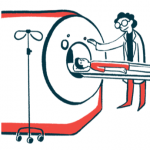Ponvory Reduces Risk of Worsening Disability Over Placebo
Written by |

Treatment with Ponvory (ponesimod) significantly reduces the risk of worsening disability or new relapses for people with relapsing forms of multiple sclerosis (MS) compared with a placebo, according to a new analysis funded by the therapy’s maker Janssen.
The study, “Comparative Efficacy of Relapsing Multiple Sclerosis Therapies: Model-Based Meta-Analyses for Confirmed Disability Accumulation and Annualized Relapse Rate,” was published in Multiple Sclerosis and Related Disorders.
Ponvory is an oral disease-modifying treatment (DMT) approved in the U.S. and Europe to treat relapsing types of MS. The medication works by modulating S1P receptors, which “traps” immune cells in lymph nodes, preventing them from getting into the nervous system and causing MS-driving inflammation.
Approvals of Ponvory were based mainly on data from a Phase 3 clinical trial called OPTIMUM (NCT02425644), which compared it with Aubagio (teriflunomide), an older approved oral DMT.
Results showed Ponvory outperformed Aubagio at reducing relapse rates, but there was no significant difference in disability progression rates, which were generally low with both treatments. Since none of the participants in OPTIMUM were given a placebo, results from the study could not directly assess how treatment with Ponvory would compare with no active treatment.
Scientists at Janssen and its subsidiary, Actelion, conducted an analysis using a database of MS clinical trials compiled by the company Certara to address this gap.
“In the absence of head-to-head trial data, this [analysis] uses indirect comparisons to provide important insights regarding relative efficacy of [Ponvory] vs. placebo,” the scientists wrote.
“Having comparative data in the appropriate context could help MS prescribers when selecting an appropriate MS disease modifying treatment,” the researchers said.
The researchers developed two statistical models — one that assessed annual relapse rate (ARR), and another that assessed confirmed disability accumulation (CDA), defined as worsening disability that lasted at least three months. The ARR model included data from 40 clinical trials, while the CDA model included data from 26 trials. Both models included data for more than 30,000 people with MS, covering 17 different medications, plus a placebo.
Results from these models showed Ponvory significantly decreased relapse risk by 53%, and reduced CDA by 39%, compared with a placebo.
In the CDA model, 14 of 17 therapies significantly reduced the risk of disability progression — the three exceptions were interferon beta-1b (sold as Betaseron and Extavia), glatiramer acetate (sold as Copaxone and generics), and Zeposia (ozanimod). The researchers noted that Zeposia — which, like Ponvory, works by modulating S1P receptors — tended towards decreasing disability risk, but the difference did not quite reach statistical significance.
The ARR model indicated that all 17 therapies included in the analysis significantly reduced relapse risk compared to a placebo. In both models, the relative benefit of treatments was generally more pronounced in patients who had not received any therapy before, compared to those who had received other DMTs before starting a new treatment.
“In addition to the head-to-head comparative results vs. [Aubagio] in the OPTIMUM phase 3 trial, the results of this [analysis] will help treating neurologists in conversation with their patients about selecting the most appropriate DMT,” the researchers concluded.
The team noted that, while their analysis attempted to make mathematical adjustments to account for differences between trials, these differences cannot be completely negated and remain a limitation of this type of analysis.






